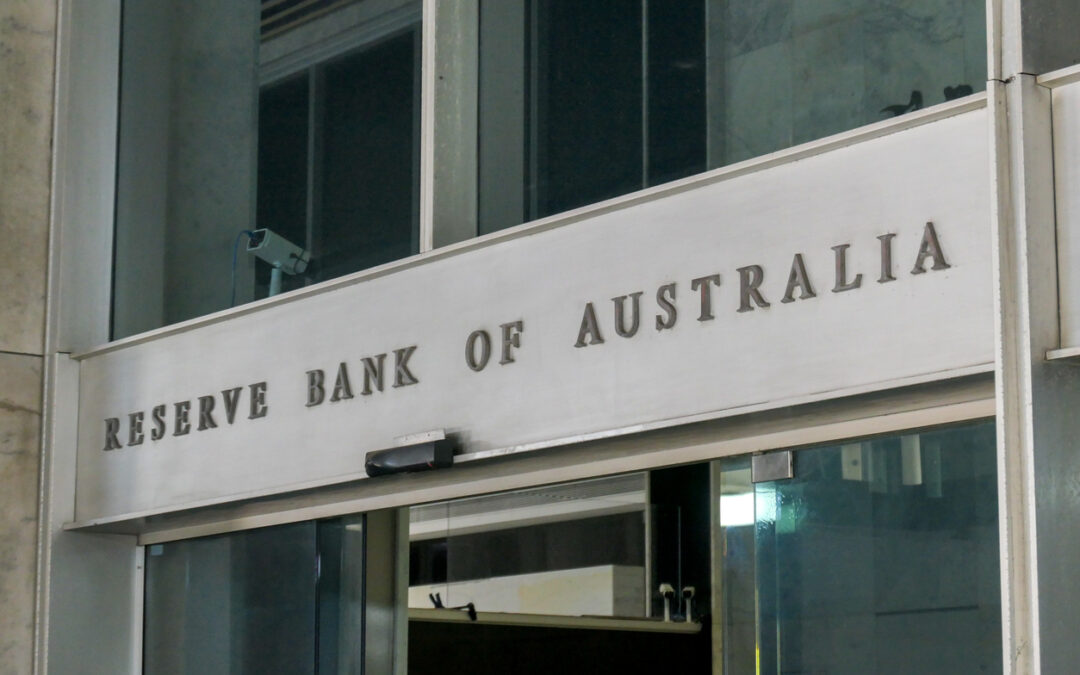The RBA left rates on hold in August as we expected, but their rhetoric and view of aggregate demand were surprisingly hawkish. Given the Board apparently does not see its way to cutting rates this year, our expectation of a November rate cut is unlikely to be achieved. Our rate forecasts are under review while we assess the basis for the RBA’s own economic outlook.
As widely expected, and recently completely priced in by financial markets, the RBA Board left rates unchanged today. This had been our expectation as well. Inflation still looks to be on track to return to the target range next year; the RBA’s forecasts for trimmed mean inflation are not materially different to our own, though its near-term headline inflation forecasts are a little higher. While in our view, this expected decline in inflation sets up the conditions for the RBA to start scaling back some of the current restrictiveness in the stance of monetary policy later this year, the Board does not expect that start to occur that soon.
The Board’s statement and the Statement on Monetary Policy (SMP) continued to highlight upside risks to inflation and to not rule anything in or out. The statement and forecasts were more hawkish than we expected, reflecting a surprisingly bullish view on domestic demand. In the media conference after the decision, the Governor went one step further, all but ruling out rate cuts this year by stating explicitly that: ‘A near-term reduction in the cash rate doesn’t align with the Board’s current thinking.’
Prominent in the Governor’s language in the media conference was the need to ‘stay the course’ to get inflation down. This and some other language reveal that the RBA Board is not yet thinking in a forward-looking manner, but it appears to want to see inflation almost back in the target range before cutting rates. Given the lags in transmission of policy, this implies that the risk of inflation undershooting the inflation target range in the years ahead have gone up.
Given the Board apparently does not see its way to cutting rates this year, our expectation of a November rate cut is unlikely to be achieved. Our rate forecasts are under review while we assess the basis for the RBA’s own economic outlook.
That the RBA would be on hold today did not look so obvious to market participants a week ago. In the lead-up to the June quarter CPI release, much of the focus was on upside risks to inflation. Market pricing implied a material chance that the RBA would lift rates at the August meeting. As it turned out, though, CPI inflation was in line with our sub-consensus call. The crucial trimmed mean measure of trend inflation was slightly below even our expectations; the RBA has characterised the result as broadly in line with their May forecasts.
And then at the end of the week, the US payrolls data were much weaker than the market expected. Risk appetite declined and so did equity markets and bond yields. The Federal Reserve is unlikely to respond to these shifts in the way that some of the more feverish speculation has suggested. It will, however, respond to the softening in the labour market, which has taken the unemployment rate above the Fed’s forecast for year-end. We continue to expect the Fed to start cutting the Fed funds rate at its next meeting in September, and we have revised our forecast for subsequent months to be a slightly steeper trajectory than previously expected.
Likewise, the RBA Board will not overreact to these latest market developments, and the Governor’s comments confirmed this. Indeed, they have remained more hawkish than recent market pricing would imply.
On the international front, the RBA has persisted with the view, expressed in the June minutes, that global growth has troughed. As we noted at the time, there are risks around this view. The SMP contained multiple mentions of upside risks to goods inflation due to stronger demand for Asian goods, trade and geopolitical tensions and an increase in shipping costs. That said, global progress on inflation had ‘surprised to the downside’, which ‘raised the prospect of a faster easing in inflation’.
Central to the Board’s hawkishness is its assessment that the level of demand continues to outstrip the level of supply, partly because the level of domestic supply capacity is smaller than previously thought. This levels-based analytical approach is a relatively new emphasis at the RBA; it is substantially based on past inflation outcomes and assumes a lot about the structure of the supply side. In the media conference, the Governor said she would not ‘hang her hat’ on the staff’s numerical estimates of supply. But these estimates have clearly had a bearing on the Board’s latest policy decision and language.
The RBA has also upgraded its view of the resilience of domestic demand. Other than some revisions to the past for consumption, which drop out of the growth rates for next year, most of this upgrade is coming from public demand. Also important has been a shifting out of the assumed decline in population growth. The RBA has now aligned with our own population assumptions, first articulated nearly a year ago by Westpac Economics Economist Ryan Wells: that population growth has peaked, but that it will take a couple of years to return to pre-pandemic trends. (A side note: 2023 turned out a touch higher than we originally thought, and we would now put growth in 2024 at 2% from 1.9% previously, similar to where the RBA has now got to.) As a result, the RBA’s view of employment growth and overall demand growth has been upgraded.
Also central to the RBA’s view on inflation is that it has revised down its view of the near-term outlook for productivity. This is largely because of a mechanical adjustment driven by average hours worked remaining a bit stronger than previously thought, but also because the RBA’s forecasts for business investment are not strong enough to result in much catch-up in the stock of capital per worker.
Some of the other forecast revisions go the other way, however. It is noteworthy that both unemployment and wages growth have been revised down, the latter quite noticeably. But the previously mentioned revision to productivity growth means that the RBA took no signal from this.
While the Board understandably wants to continue to be seen to be resolute on inflation and vigilant to the upside risks, its current view of the outlook hangs on a number of strong assumptions. It was always going to be the case that the RBA would be among the last of its peers to start cutting, given it did not raise rates as far. However, recent evolutions in its analytical framework and rhetoric increase the risk that it will now not pivot in time.









